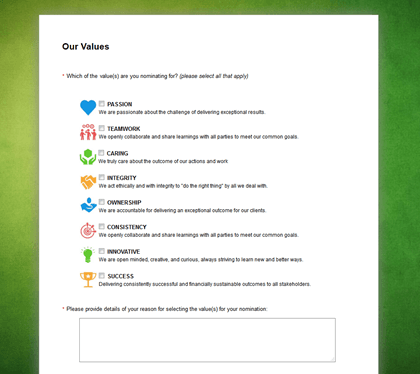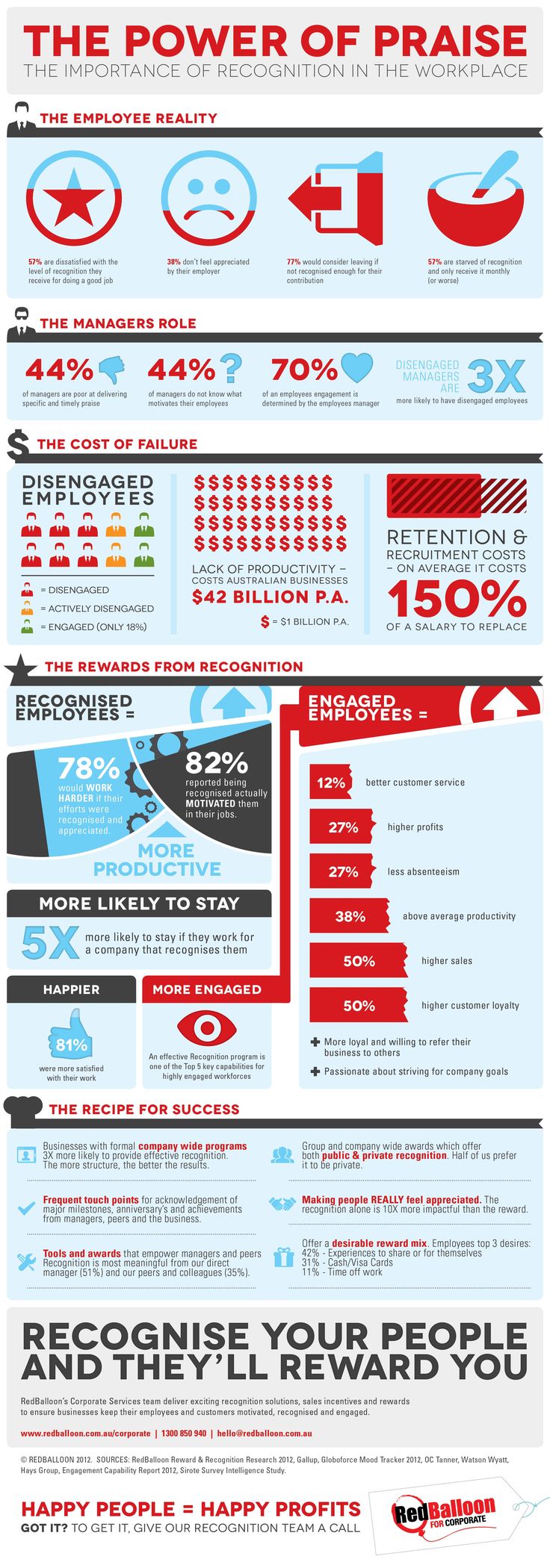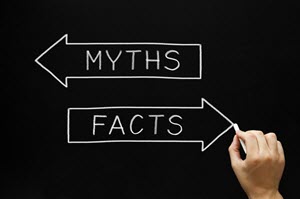The Complete Guide to Employee Recognition


In This Resource Guide:
- An Introduction to Employee Recognition
- How Does Employee Recognition Benefit Your Organisation?
- Who Should be Recognised in an Employee Recognition Program?
- 8 Tips For Best Practice Employee Recognition
- Employee Recognition Misconceptions
- How Technology Supports Employee Recognition
- How to Choose Employee Recognition Survey Software
- Employee Recognition Statistics
- Employee Recognition Video
- Employee Recognition Infographic
An Introduction To Employee Recognition
Employee recognition is when a Manager or a peer recognises the efforts and or achievements of a person within an organisation. Eighty-three percent of organisations suffer from a deficit in [employee] “recognition” and only 17 percent of employees believe their managers know how to recognise them well, according to Bersin by Deloitte.
Whilst employee expectations around appreciation and recognition is nothing new, the way in which recognition is delivered needs to change to meet the needs of the workforce that’s coming forward. By 2020 50% of the global workforce will be Millenials (born between 1980 and 2000) who are more accustomed to receiving instantaneous, high frequency and individualised feedback.
Nine to five communication is blurring as digital media ensures that real-time communication can happen anywhere, anytime and for Millenials this ‘always-on’ communication loop is expected. Unlike previous generations of employees, this generation’s use of technology and their affinity with the digital world clearly sets them apart. Their desire to keep learning, ambition and desire to move rapidly up through an organisation puts more pressure on Managers to communicate and recognise performance.
Millenials have changed, and will continue to change the face of the workforce and bring new demands to organisations. This will result in a need to expand the variety of recognition tools available to Managers who need to create new ways to appreciate their employees. And while this will fall to Managers to set the standard of employee recognition, it is HR’s role to provide the mechanisms to enable and support this process.
Given that employee recognition is a low cost, high impact mechanism that benefits all organisations – why wouldn’t you invest your time in doing it? As you will see from the research we uncover below, the Return On Investment is a ‘no brainer’.

How Does Employee Recognition Benefit Your Organisation?
Employees are the backbone to any successful organisation. They put a human face on the product or service, form personal connections with customers and define the culture of the organisation. Yet despite the importance of a high performing workforce, research shows that 32% of organisations struggle to keep their best employees. Loyalty is an increasingly rare trait, with a study in late 2008 showing that 75% of those questioned said that they thought they would have between two and five employers during their working lives. Today, the proportion stands at 54%, with a quarter of respondents expecting to have six or more.
Organisations have many options to keep their employees happy and loyal but there is a one technique that has been proven over and over to work incredibly well: Employee recognition.
Research has shown that when organisations integrate employee recognition as a primary practice, employee behaviour improves. As a consequence, the organisation benefits through:
- Improved Engagement, Productivity & Profits
Recognition in the workplace leads to a sense of accomplishment and helps employees feel valued. When an employee feels valued they are more likely to feel more engaged in fulfilling their role. Additionally, when a desired behaviour is recognised it increases the probability that the desired behaviour will be repeated and therefore productivity increases. Companies spending approx 1% of payroll on recognition are 79% more likely to see better financial results.
Companies using strategic recognition programs are 48% more likely to report high staff engagement. Click To Tweet
- Motivated Employees
As soon as employees begin to get recognised for their efforts, they don’t want the feedback to stop. So they begin to work harder, smarter, and faster so they can be recognised again and again. Receiving recognition drives employees towards excellence and motivates and encourages them to do their best.
- Encourages a Collaborative Work Environment
Each employee within an organisation has a reputation unique to them. So, when recognition is given to an employee, other employees often perceive that person to be someone they’d like to work with. Working with ‘star performers’ feels good and leads to a collaborative work environment, where everyone shares ideas, works together, learns from others and supports and encourages each other. In turn the sharing of knowledge through a collaborative environment yields better outcomes for the individuals involved, the organisation and the customer.
- Boosts Employee Happiness and Morale
Employees are happiest when they are recognised for the effort they put into their work. Happiness can also boost productivity, result in less time spent complaining and more time focused on the job. The University of Warwick conducted a study that found, if employees are happy they work 12% harder. Recognition can go a long way to boost personal happiness which in turn leads to greater morale within the workplace. Employees are more likely to want to continue working in an environment where morale is high and they feel happy.
- Increases Positive Workplace Culture
Recognition has an effect on the individual, employees, and the organisation as a whole. A positive workplace culture is essential for business because it engenders a team spirit, results in engaged employees and it helps everyone become more productive.
- Lower Employee Turnover Rates
In an organisation where employees are motivated and feel valued there is less likely to be high turnover rates. This means the organisation spends less on hiring and training new people, retains knowledge within the organisation and keeps momentum high.
- Develops a Willingness to Help Customers
Customer service is vital to an organisation’s success because it is often the primary contact that the organisation has with its customers. When customers have problems you want your employees to positively and proudly reflect the organisation and its values. When they are recognised for the good work they are doing they are more likely to be willing to continue representing the organisation in the best possible way.
- Improves Employee Health
Companies with peer-to-peer recognition are 35% more likely to report lower turnover. Why is this? The Harvard School of Public Health suggests that there may be a correlation between happy employees and healthy employees.
“Serious, sustained stress or fear can alter biological systems in a way that, over time, adds up to ‘wear and tear’ and, eventually, illnesses such as heart disease, stroke, and diabetes,” Harvard researchers explained.
“Chronic anger and anxiety can disrupt cardiac function by changing the heart’s electrical stability, hastening atherosclerosis and increasing systemic inflammation.”
Employee recognition boosts happiness which in turn boosts health and can result in benefits such as lower absenteeism.
Who Should be Recognised in an Employee Recognition Program?
There are three main areas where you can focus your employee recognition efforts and each of these has different pros and cons:
1. Peer recognition
Pros:
- Most employees within an organisation spend the majority of their time interacting with their peers and so there are more opportunities for recognition to take place.
- Peers often see work that may go unnoticed by Managers.
- Peers recognising others within their team will positively influence the relationships within the organisation.
Cons:
- Without controls in place it is open to abuse with peers choosing to recognise friends rather than performance or value-based performance achievements.
2. Team based recognition
Pros:
- The entire team enjoys the praise and accolade that comes from the recognition, nobody feels like they have been overlooked.
- Motivates people to work together.
- Unites people to work towards a common goal.
- Encourages communication amongst the team.
- Encourages cross-training of people amongst the team.
Cons:
- If there are people on the team who have not contributed equally then rewarding the team may be perceived by some employees as unfair.
- Depending on the composition of the team the performance from a team of many may be lower than a team of one.
3. Manager to employee recognition
Pros:
- The value of the recognition received is high due to the perceived status of the person giving the praise.
- Recognition is validated by a person in positional authority theoretically removing bias.
- Limiting the number of people who are providing the recognition may mean that there is more consistency in the behaviours being rewarded.
Cons:
- Managers may play favourites.
- Employees often perceive this type of recognition to be passed around the team rather than awarded on merit.


8 Tips For Best Practice Employee Recognition
- Be specific
When giving recognition, it is crucial that praise is given for a specific behaviour. This is so important because the employee needs to know what behaviour they need to do more of to get the same outcome: recognition.
When giving praise, do not generalise. Make it specific and meaningful and tie it to behaviours that benefit the organisation, so that it has a long-term effect on the employee and those around them who see the employee receive the award.
Use prompts such as these to ensure recognition is specific;
-You’ve made my day because…
-You really make a difference by…
-I’m impressed with…
-What an example you set for the team when you…
-You can be really proud of yourself for…
- Make recognition relevant
Recognition should be given to employees who show behaviours you want to see more of. Every positive behaviour that is rewarded with recognition should correlate to a meaningful business goal. The behaviour must be relevant to achieving the organisation’s vision, goals and values.
Random acts of recognition that aren’t tied to business goals don’t tend to affect employees in the same way because the employee is confused about the message.
- Personalise the recognition
When the efforts of the team or the employee are acknowledged ensure that communication is personalised. Think about the individual / team, what is the most effective way to recognise them? All communication should be personalised. It should include their name, be signed off by someone of importance from within the organisation, and identify the behaviour they are being recognised for.
If you choose to include recognition that has a monetary value then make sure that this will have personal significance to the employee you are sending it to.
- Automate your recognition system
Importantly, recognition programs don’t need to be onerous or cost a fortune to implement.
Online software programs offer you the flexibility to automate a great deal of the recognition process and to add in checks and balances to ensure favouritism is eliminated. The simplest way of doing this is to use a recognition survey that captures recognition opportunities from staff and then, when approved, is recognised through a personalised printable e-certificate. If you choose to automate the process, make sure that your system is personalised enough to make the recognition feel ‘real’.

- Everyone eligible to be recognised
In order for the recognition to be effective in encouraging employees and to be perceived as fair, all employees should be eligible for the recognition. No group, or individual, should be excluded or favoured. Indeed the Millenial workforce that will dominate the workforce in the years to come prefers and expects to receive feedback in real time.
- Criteria communicated
Make sure that all employees understand what criteria will be used for recognition. If it is behaviours that you wish to acknowledge, make sure that these are clearly explained and examples provided. By providing examples you can also check that all employees within the company have an equal opportunity to be rewarded for displaying these behaviours.
- Provide timely recognition
Behaviour should be recognised as close to the desired behaviour taking place as possible, so that the recognition immediately reinforces the behaviour the Manager wants to encourage. We recommend that recognition occur ideally the same day as the behaviour. The more time that passes between the performance and the recognition, the lower the impact of that recognition.
- Align recognition with effort
Not all behaviour is created equal; some behaviour requires more discipline and effort than others. The method and scale of the recognition that is passed back to the employee needs to take this effort into account as to not consider this could actually end up offending and consequently undermining the employee’s faith in the process and in the organisation.
5 Common Employee Recognition Misconceptions
- Recognition Programs are expensive
Managers may acknowledge the benefits but fear that recognition will cost a lot of money. But that’s incorrect. Incentive programs don’t have the same effect as recognition and often require a substantial financial investment. In fact, The Incentive Research Foundation revealed that non-cash recognition, such as appreciation expressed by a Manager, is more effective than financial incentives including cash bonuses, an increase in base pay and stock options.
- Recognition is time-consuming
When Managers let the perceived time involved in recognising employees dampen the benefits of taking action – they are making a huge mistake. It doesn’t have to be a time-intensive program, never underestimate the power of a simple, “Thank You”. Having a whole organisation make simple, uplifting comments to one-another can really change the mood and attitude of an organisation. True, the initial decisions about implementing recognition programs can take time, but once a structure has been decided and implemented, very little time and effort are necessary to maintain them.
- Recognition is only for top-performers
Recognition is for everyone. In fact, when you make your recognition program value-based rather than performance-based it will mean all employees are able to benefit. And irrespective of whether you are a top performer or not, employees want regular recognition for their efforts, regardless of their status in the organisation. The absence of recognition has been proven to have damaging effects on the organisation.
Employees who aren't recognised are twice as likely to quit in the next year. Click To Tweet
- Recognition is as simple as giving a timely monetary bonus
Employees don’t just want to receive money in return for their efforts, they want someone who can recognise their achievement and effort once an objective has been accomplished. Will a $500 bonus for an employee that earns $50,000, for example, be banked into the employee’s account and be absorbed on day-to-day bills? Not much of a reward is it? As such, the impact of a purely monetary approach to recognition can be low.
‘People do work for money – but they work even more for meaning in their lives… Companies that ignore this fact are essentially bribing their employees and will pay the price in a lack of loyalty and commitment.’ (Pfeffer, 1998)
- Recognition is outdated
Expressing your gratitude and appreciation of someone and their successes will never be out-of-date. Concepts of recognition, like awards for “Employee of the Month” or Service Anniversary have been around for a long time for a reason – they have proven to be successful motivators.
How Technology Supports Employee Recognition
Recognition has always been a critical part of HR operations but has undergone significant changes in the past few years. Possibly the most important change is the current trend to adopt technology to run employee recognition programs.
Employee recognition programs are increasingly moving onto mobile devices, resulting in faster and effortless ways to recognise an employee. This market will continue to grow because mobile devices are constantly developing more powerful features.
As budget is always a major consideration when deciding what type of recognition system to implement we consider here the most commonly used low cost, high impact method: digital notes, e-cards or e-certificates. The major benefit of these systems, besides the cost, is the ease with which they can be implemented and managed. Here we follow a typical three-step process:
- Create an online recognition nomination form that echoes your brand
- Customise the online nomination to align with the organisation values and or behaviours you wish to recognise
- Communicate with employees how the program works and distribute mechanisms for employees to nominate each other:
- Links on websites and / or intranet sites
- Links sent via SMS
- Links distributed via e-mail signatures
- Links displayed as QR codes
How to Choose Employee Recognition Survey Software
Bersin by Deloitte has proven that many organisations have recognition programs that are not useful because they are focusing on the wrong areas. Startlingly, 70% of employees said they were unrecognised in the past year.
Below is a guideline of questions to ask yourself when choosing employee recognition survey software. It will help you to think about your specific needs and will allow you to get a stronger idea about you are looking for:
- What are the objectives of your recognition program?
- What support is required to run this program (both internally and externally)?
- Is the technology required to run this program user-friendly?
- Does the technology provider offer assistance with communication plans to roll the program out to the organisation?
- What support does the technology provider provide and where are they located?
- Are the reports professional and easy to access and understand?
- What is the on-going cost and does this fit within the budget?
- Can nominations be:
- customised to fit your organisation’s values?
- reviewed, commented on and approved?
- handled in real-time?
- personalised e-certificates / e-cards / letters of congratulations?
- automated and reports scheduled to keep track of progress?
- Can nominations that are rejected be sent a personalised letter explaining the rejection?
Employee Recognition Statistics
- A Boston Consulting Group study shows recognition in the workforce is the #1 reason that keeps employees happy at work.
- 78% of employees stated that being recognised motivates them in their job.
- 69% of staff would work tirelessly if they were better recognised in their job.
- An IRF report has discovered that 40-50% of employees’ preferred recognition has nothing to do with the reward, but all about how it is presented and how it can promote the employee’s professional status.
- Companies spending approximately 1% of payroll on recognition are 79% more likely to see better financial results.
Video – The ROI of Employee Recognition:
Employee Recognition Infographic

Free Online Demo
Call +61 2 9232 0172 to book a free demo of our employee recognition survey solution, or simply complete the form below and we’ll get in touch:
Further reading:
PeoplePulse Staff Recognition Surveys
References:
5 Key Employee Recognition Trends In 2016, Written By Rob Peters
5 Tips for Effective Employee Recognition, Written By Susan M. Heathfield
7 Misconceptions About Employee Recognition, Written By Jim Hemmer
10 Trends in Employee Recognition, Written By Bob Nelson
Types of Recognition, Written By The University Of Lowa
Why employee recognition is so important, Written By Kim Harrison
The Ultimate Guide to Recognizing and Rewarding Employees, Written By Engage4Results




 Exceptional Survey. Solutions
Exceptional Survey. Solutions